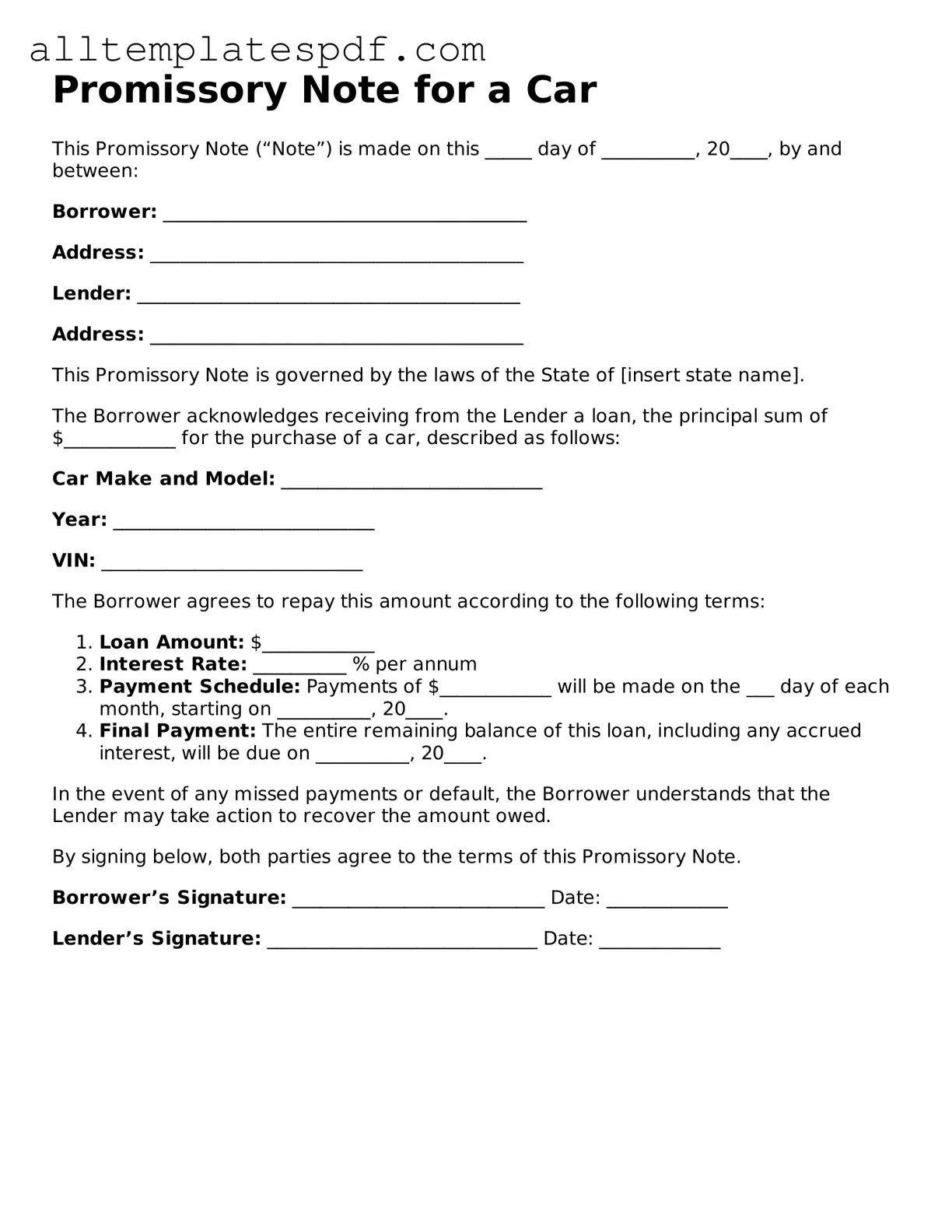When filling out the Promissory Note for a Car form, individuals often overlook important details that can lead to complications later on. One common mistake is failing to include all necessary information about the borrower and the lender. Both parties' names, addresses, and contact information must be clearly stated. Omitting any of these details can create confusion and hinder communication, especially if issues arise regarding payment.
Another frequent error involves not specifying the loan amount accurately. Borrowers sometimes write down an incorrect figure or forget to include additional costs such as taxes or fees. This can result in misunderstandings about the total amount owed. It is crucial to ensure that the loan amount reflects the precise cost of the vehicle, including any agreed-upon interest rates.
Many individuals also neglect to outline the payment terms clearly. This includes the payment schedule, interest rate, and any late fees. Without clear terms, both parties may have different expectations, leading to disputes. It is advisable to be explicit about when payments are due and how they should be made to avoid future complications.
Additionally, failing to sign and date the document is a common oversight. A Promissory Note is not legally binding unless it is signed by both the borrower and the lender. Some individuals may forget this step, thinking that verbal agreements or informal arrangements are sufficient. Without signatures, the note may be deemed invalid, leaving both parties unprotected.
Lastly, individuals sometimes do not keep copies of the signed Promissory Note. It is essential to retain a copy for personal records. This serves as proof of the agreement and can be invaluable in case of disputes or misunderstandings. Keeping a well-organized file of all related documents can provide clarity and reassurance for both parties involved in the transaction.
